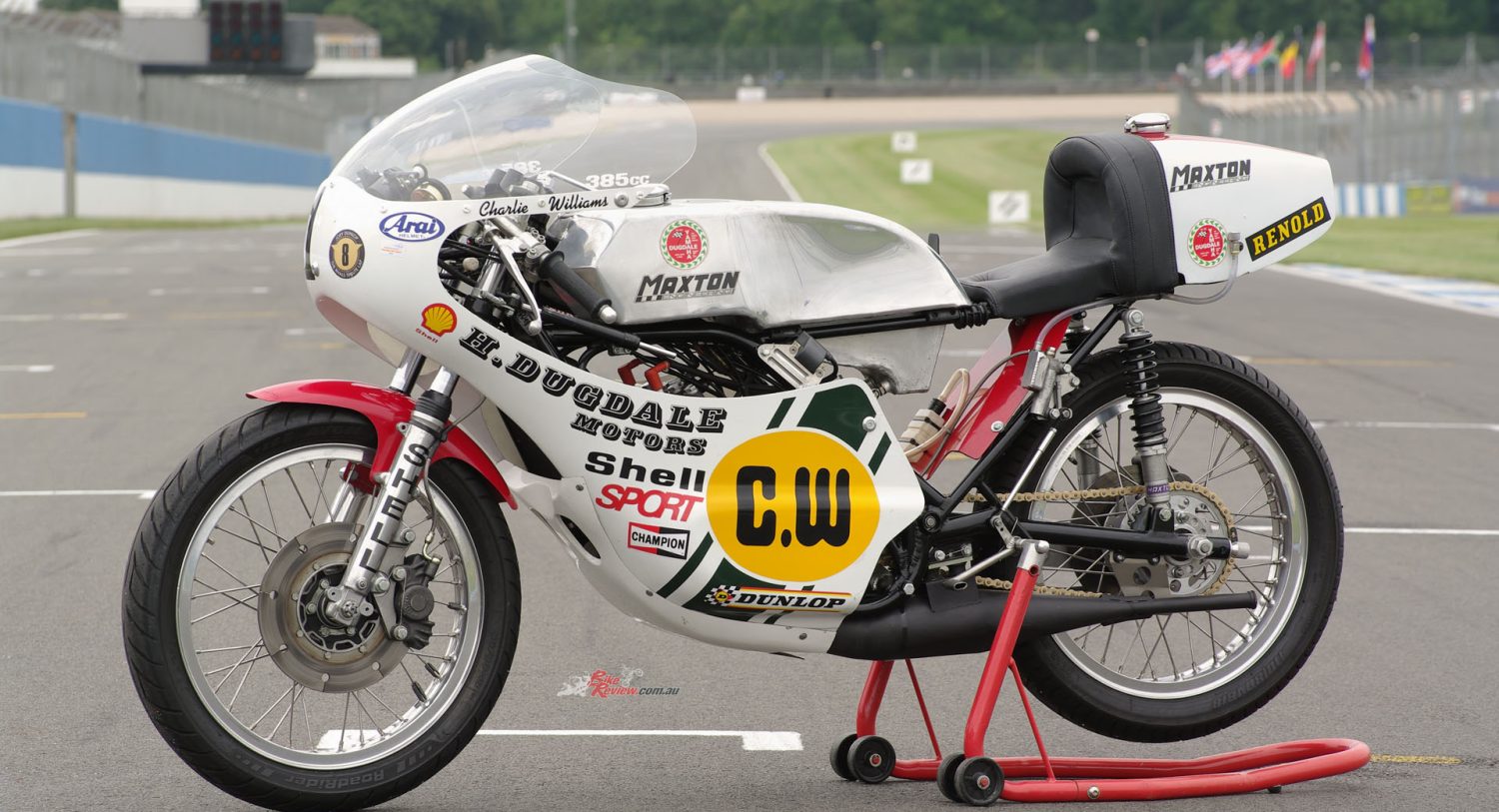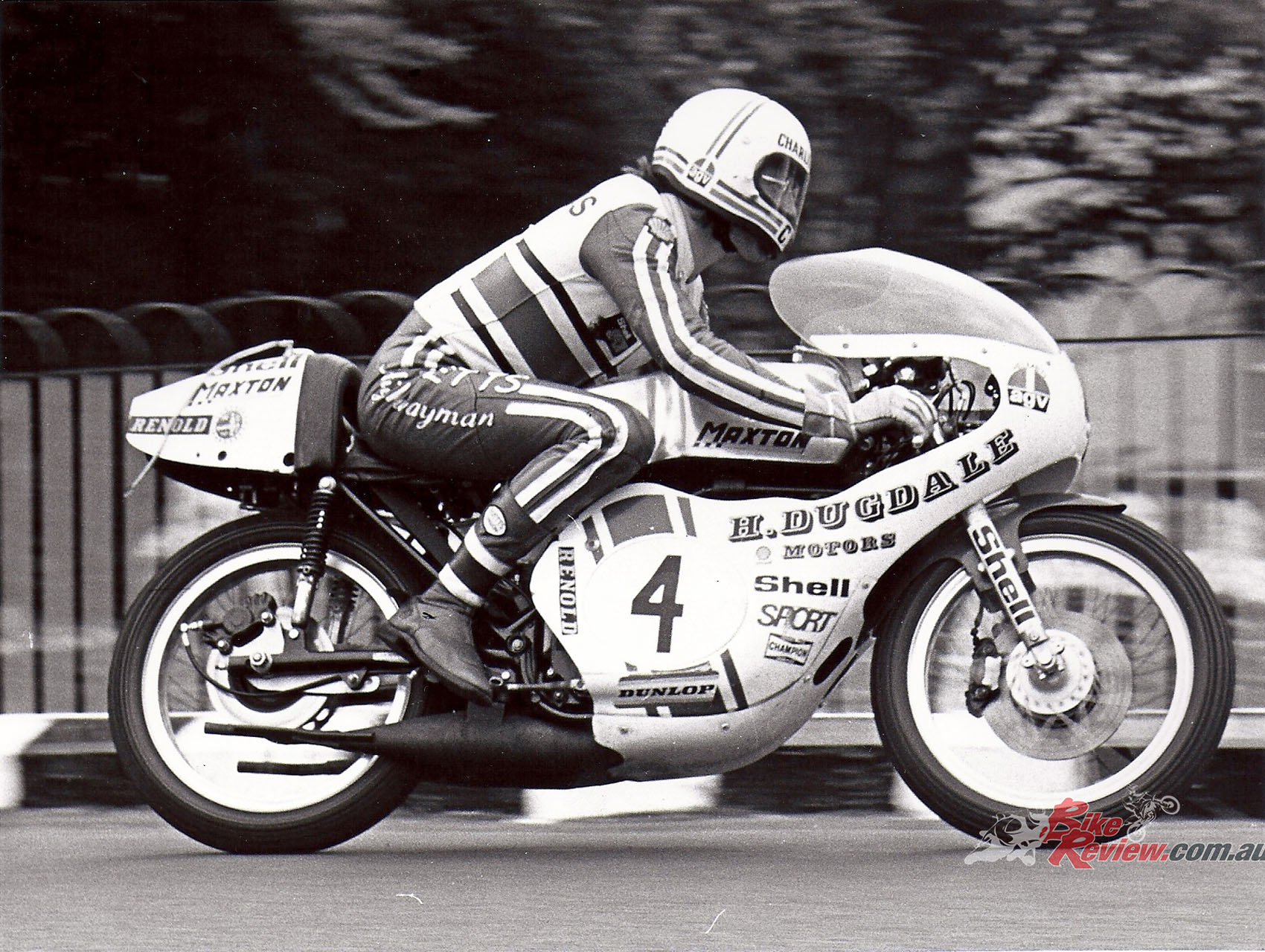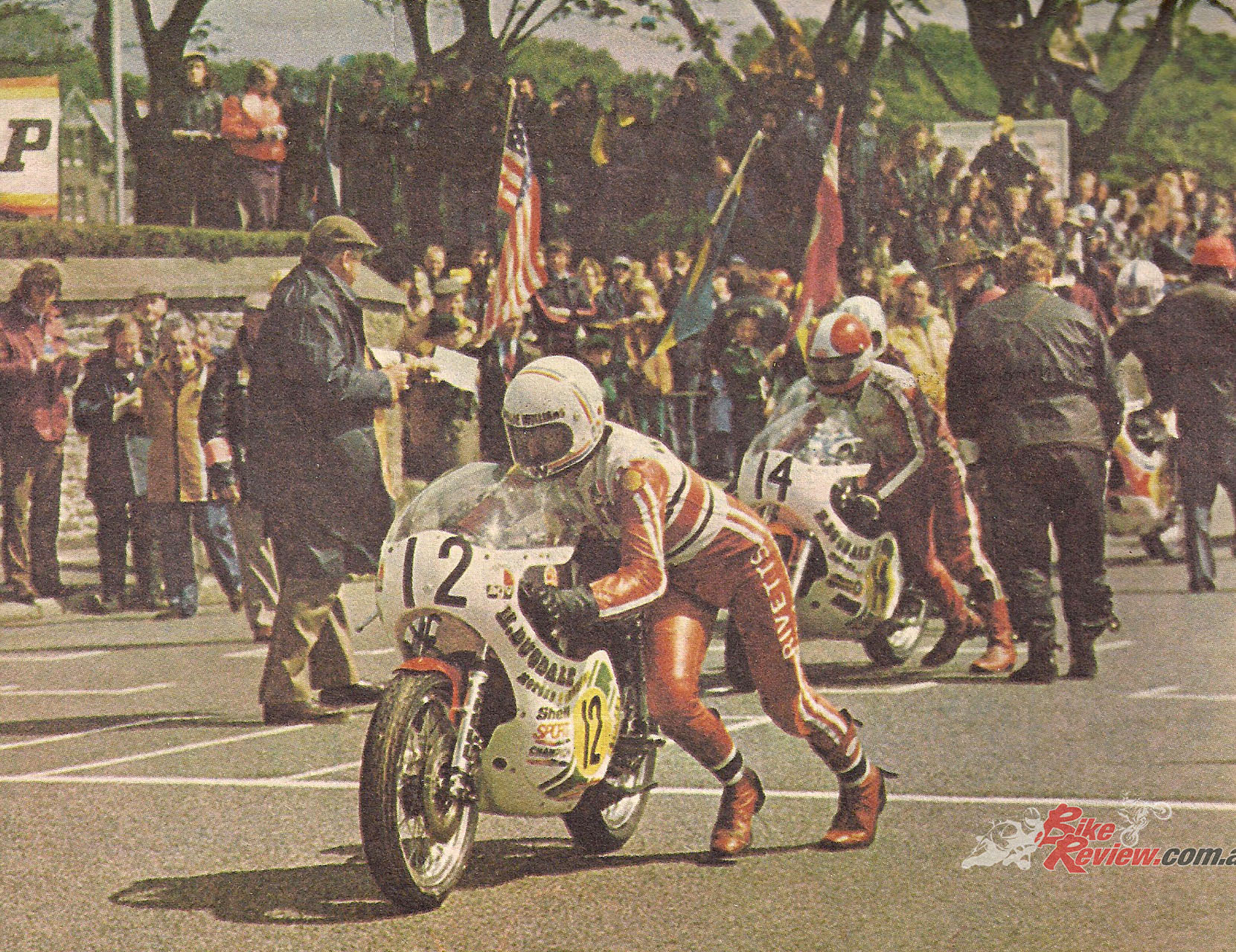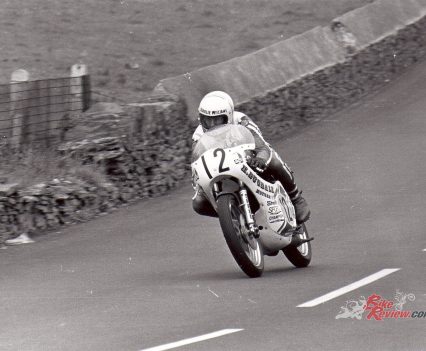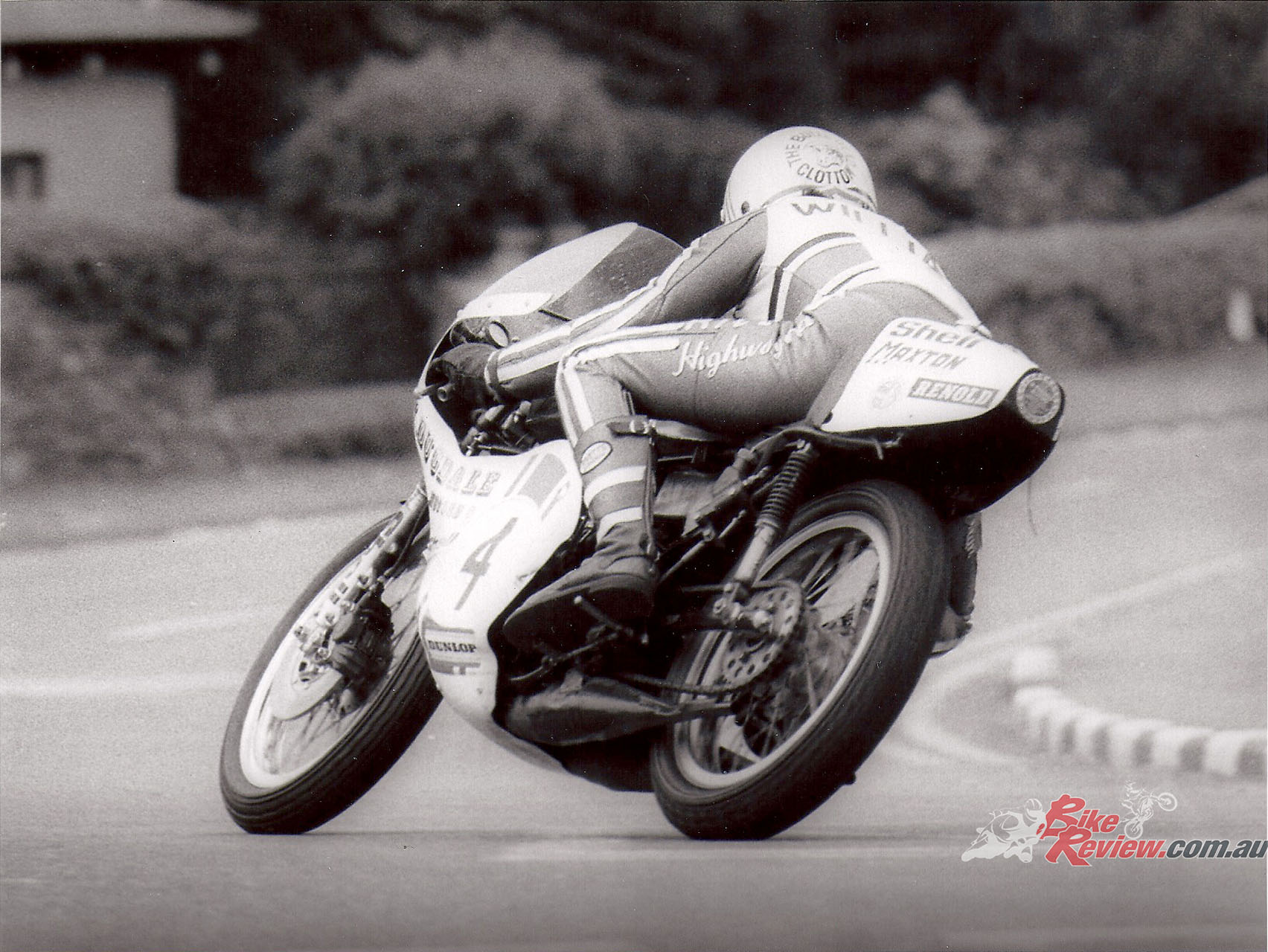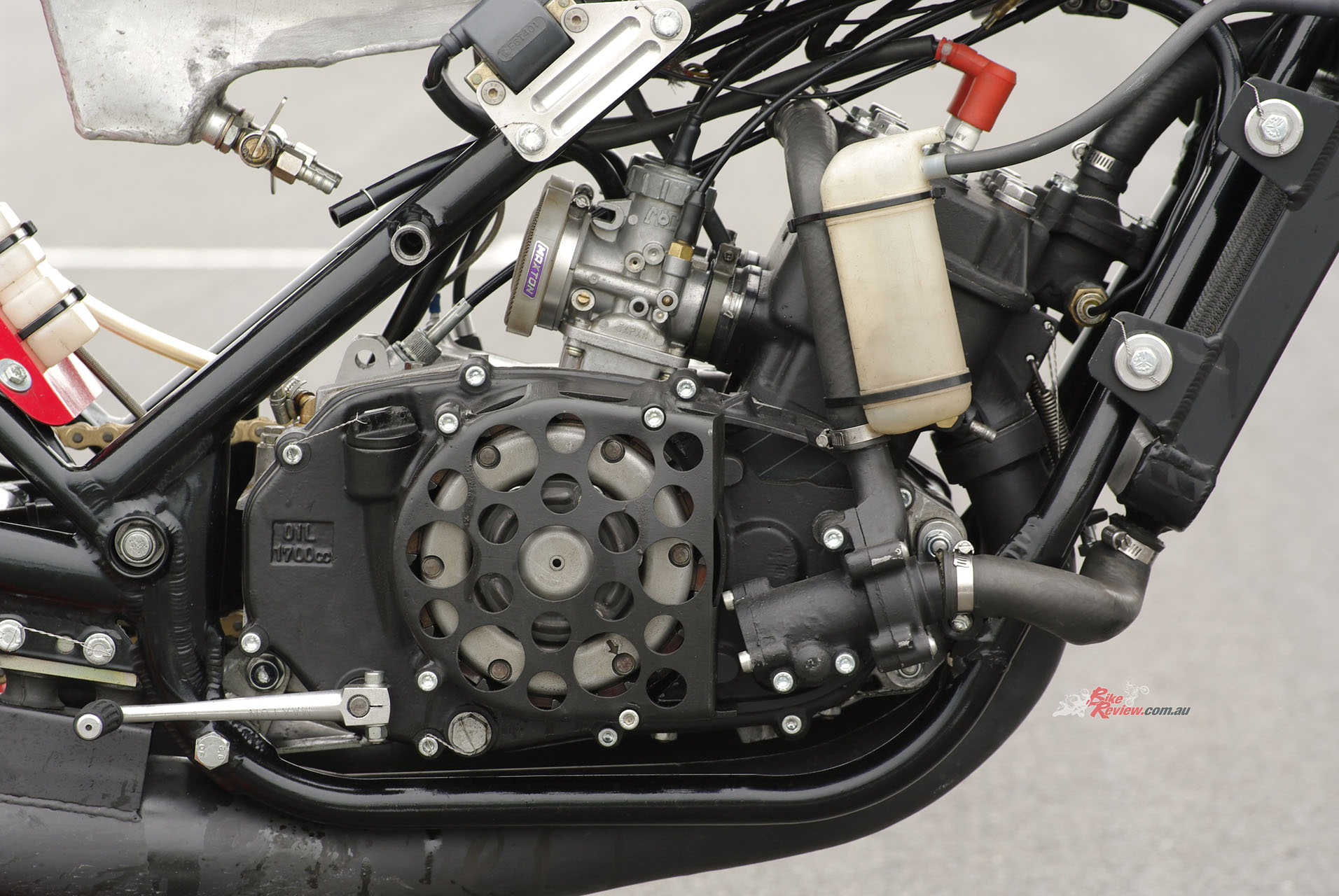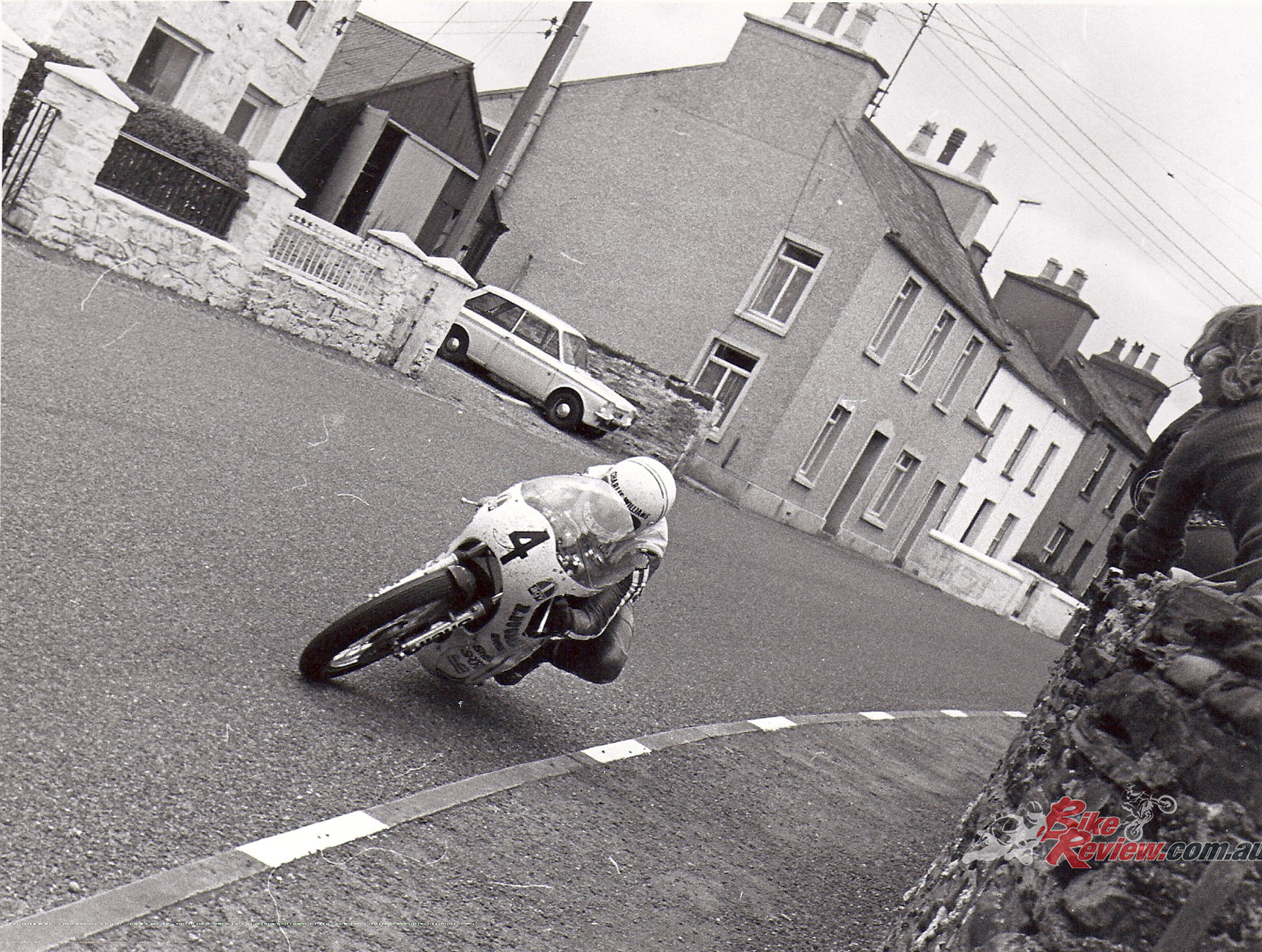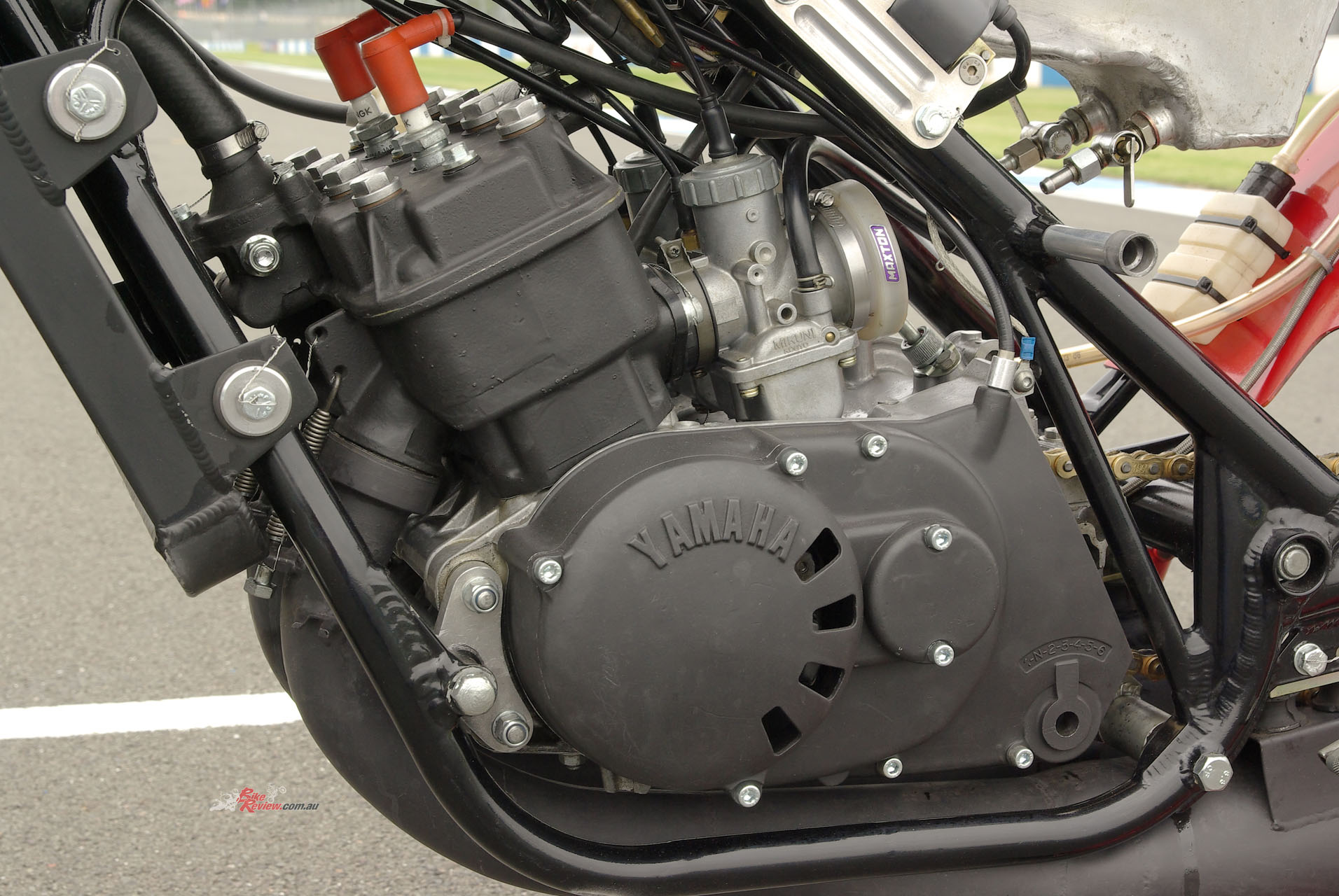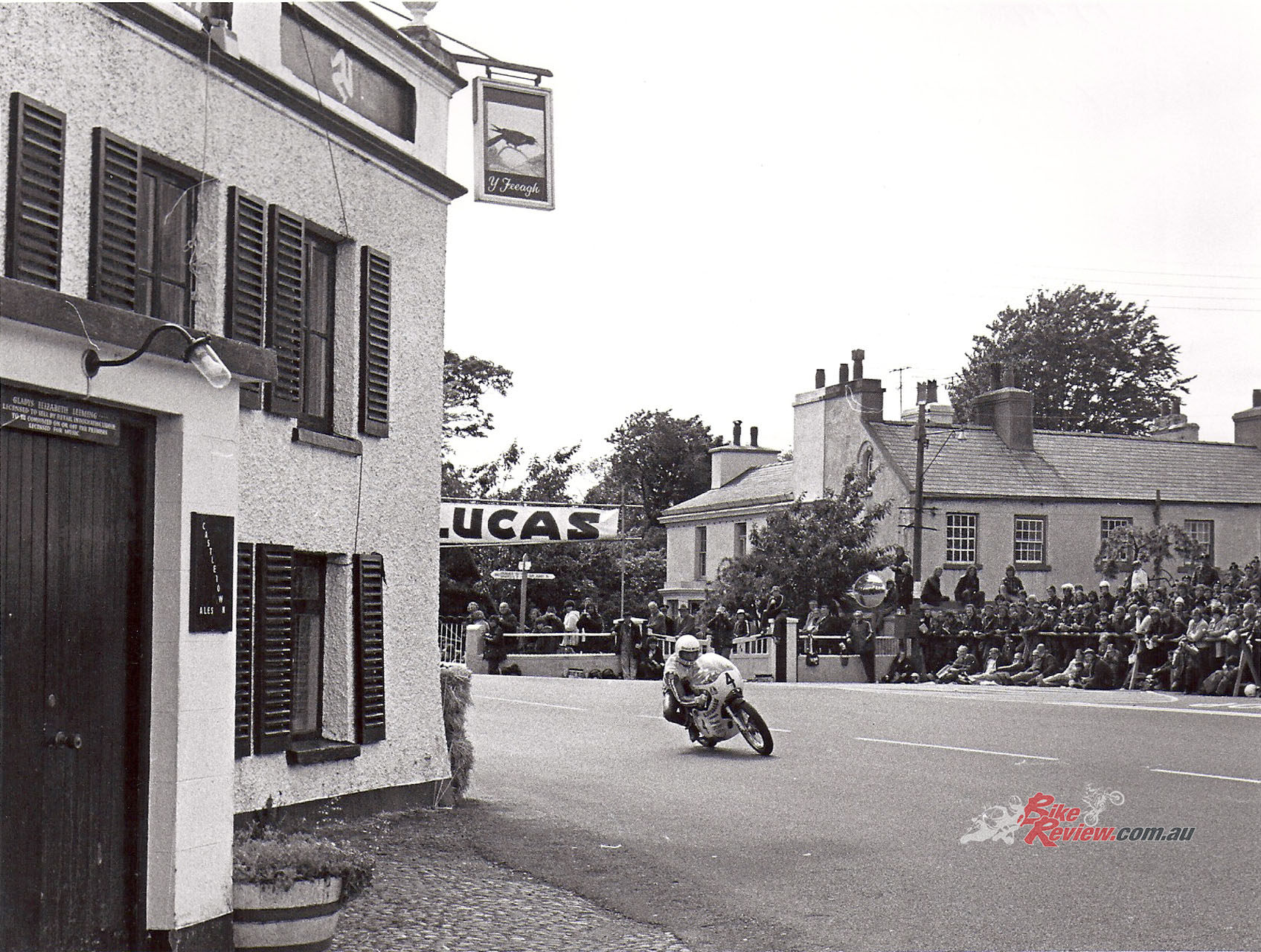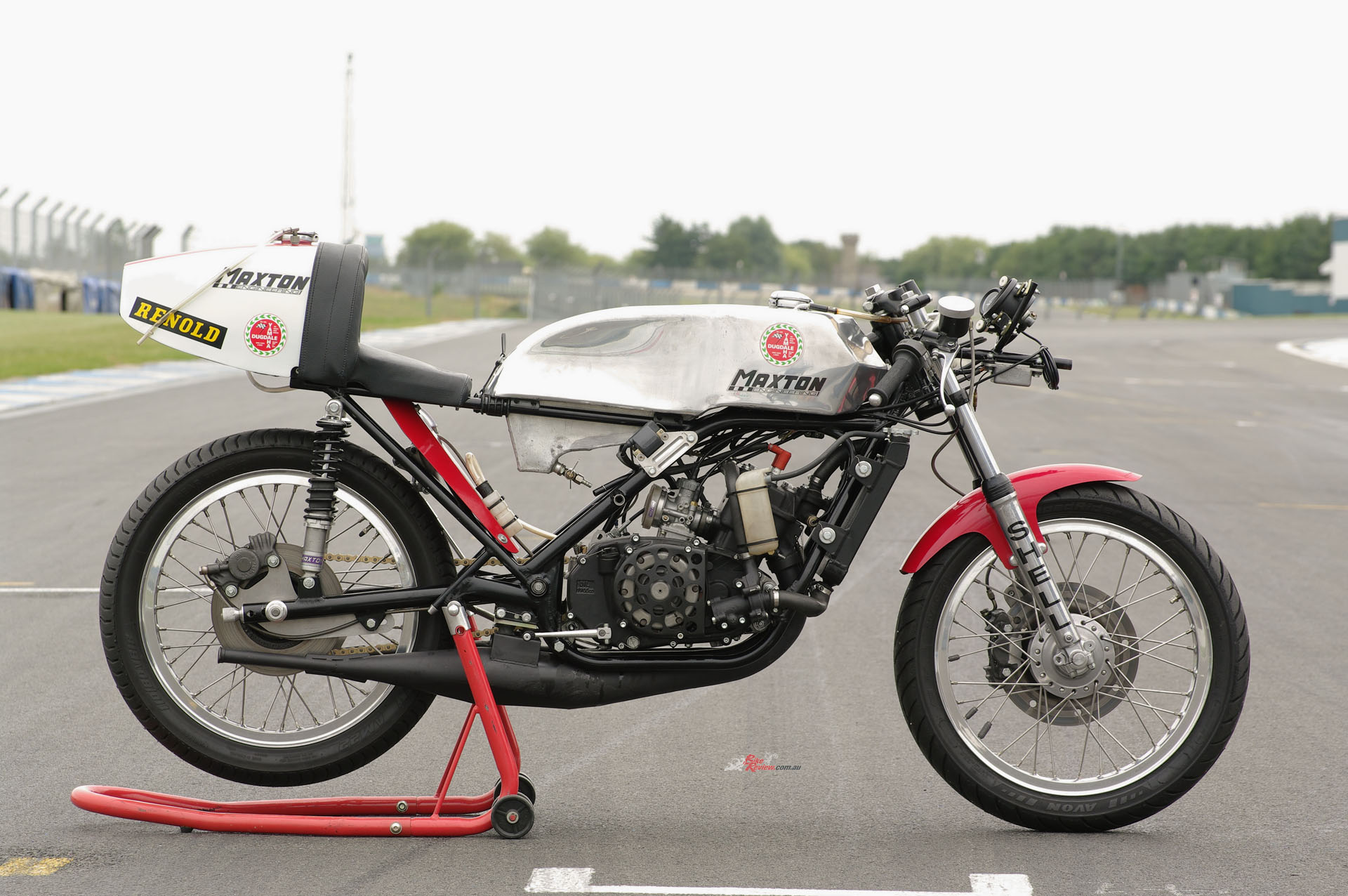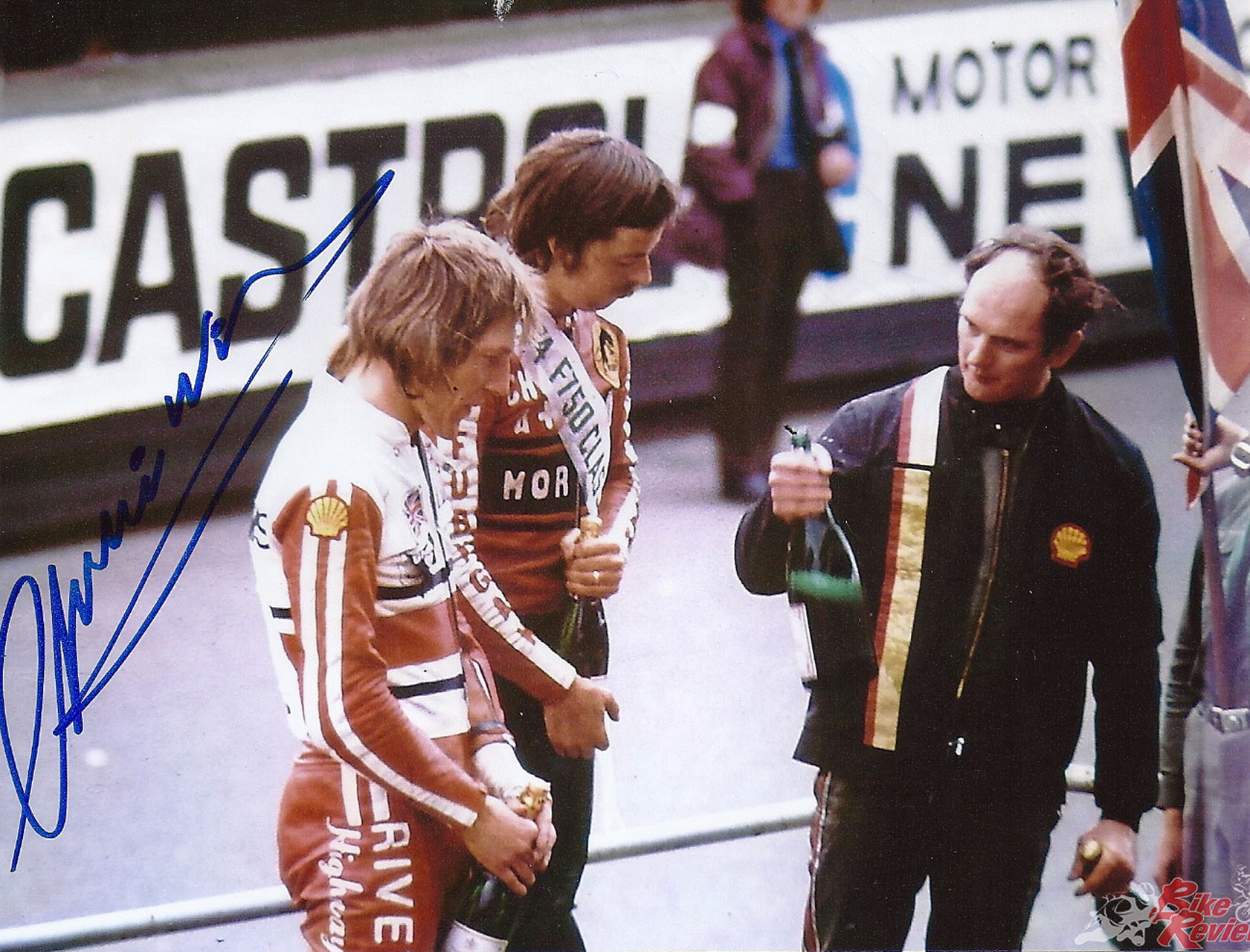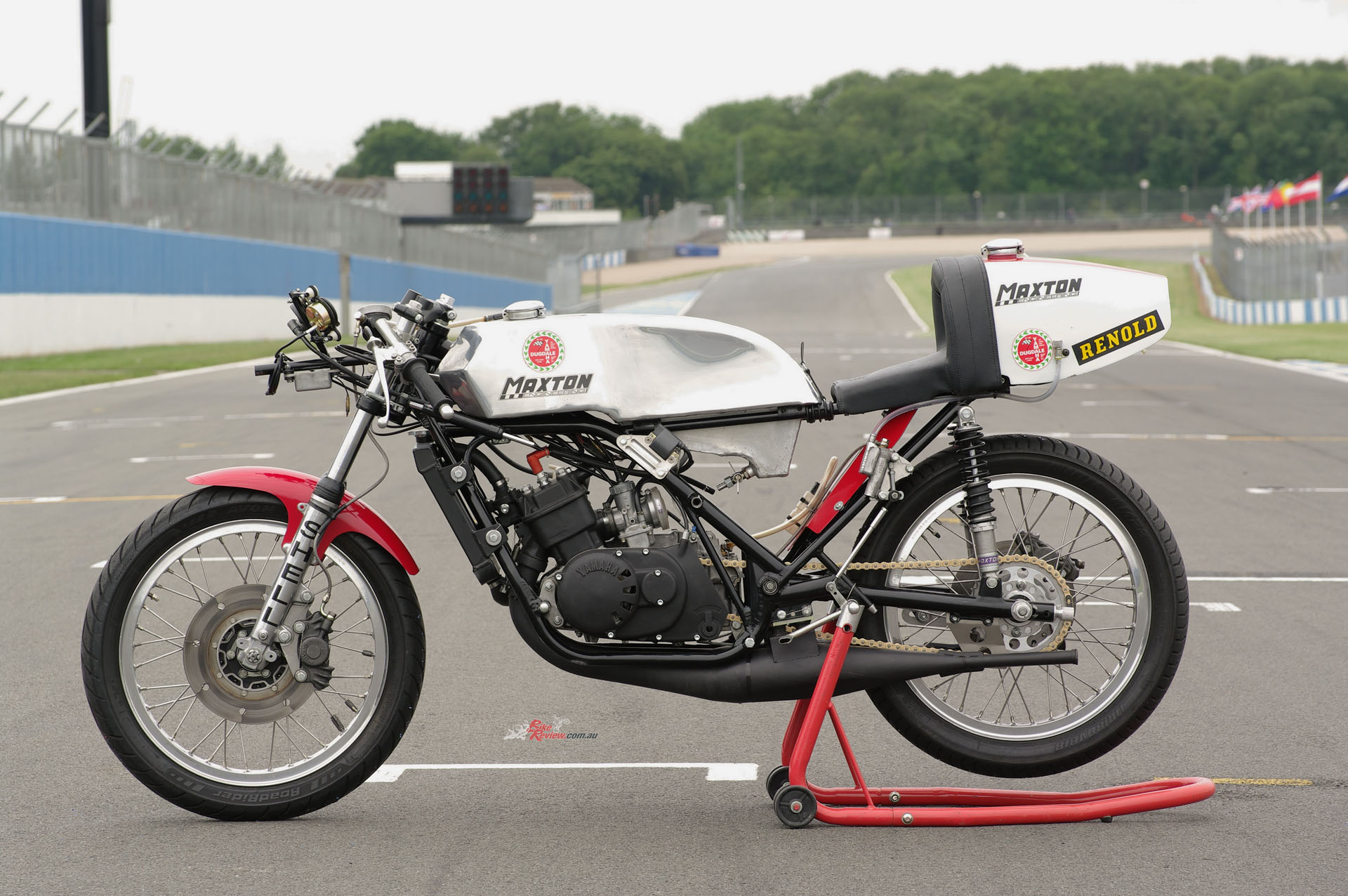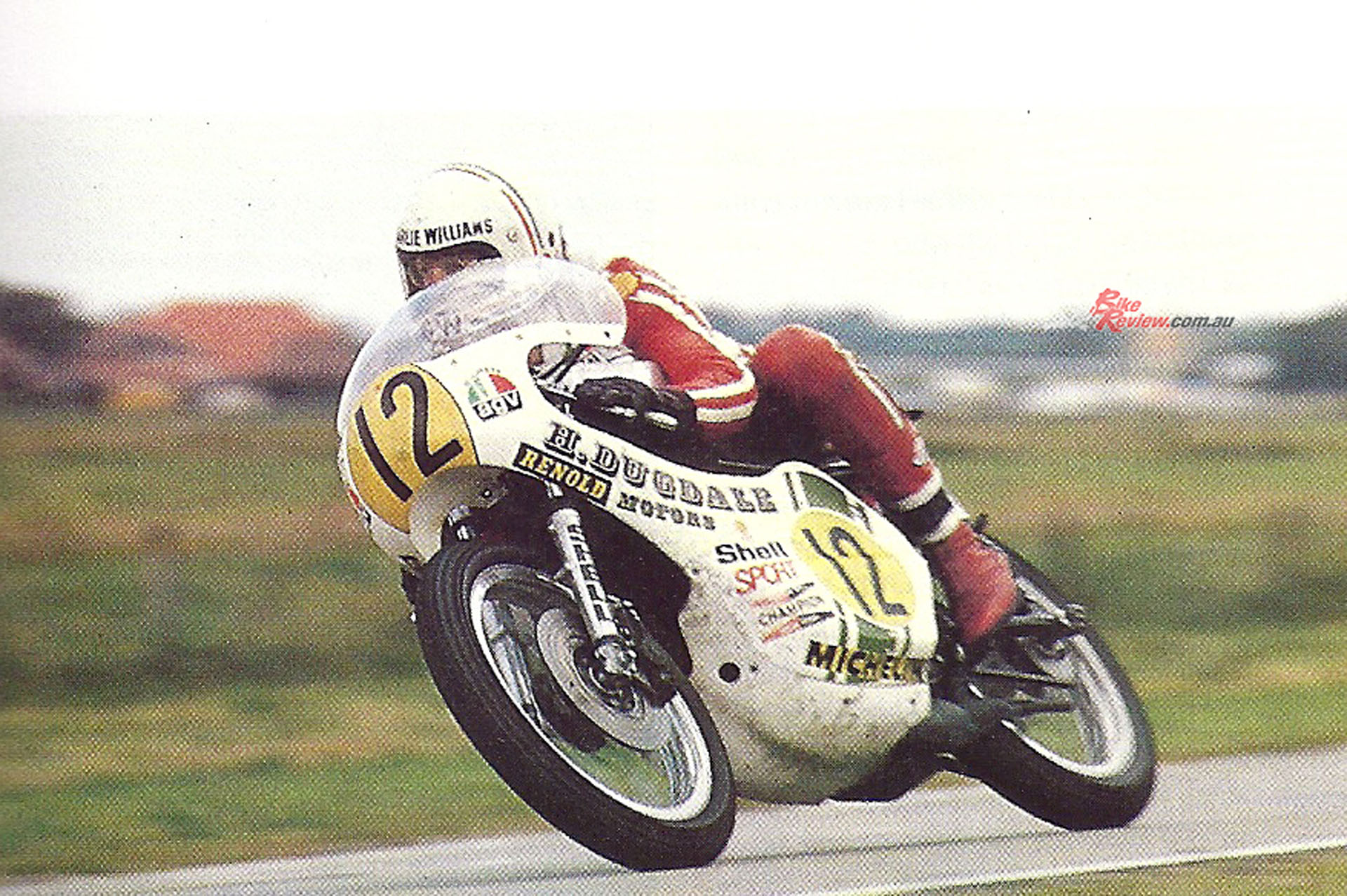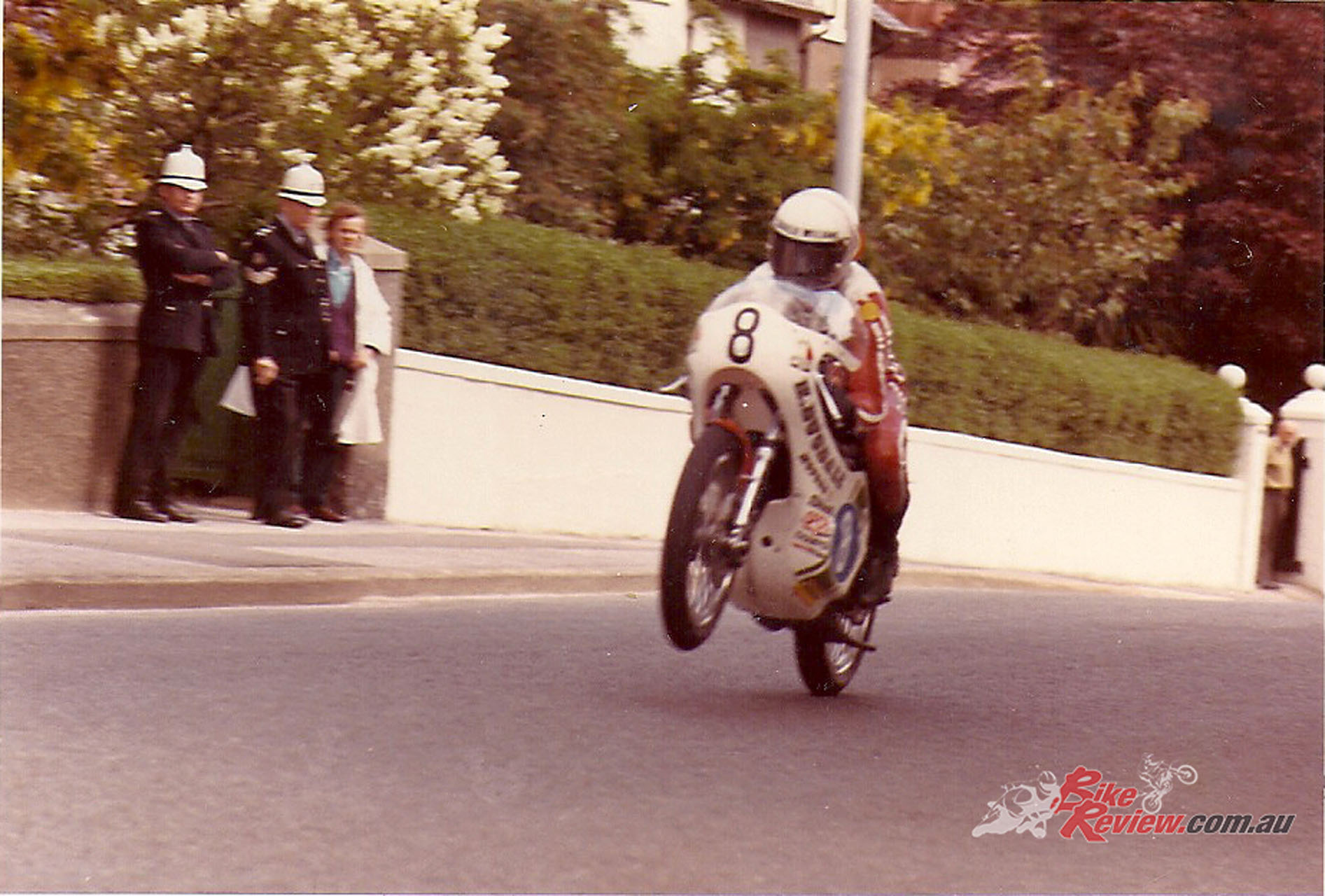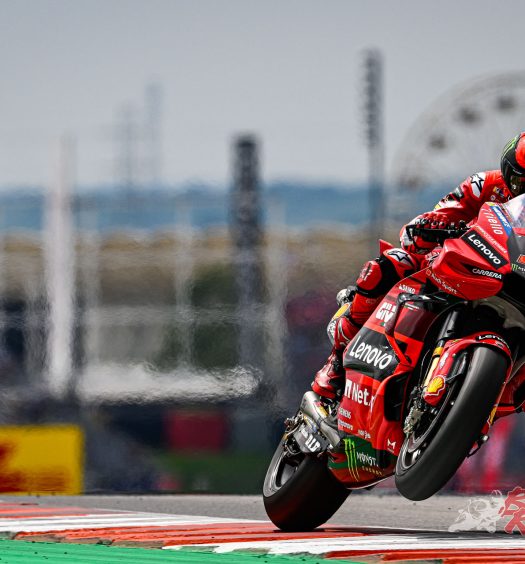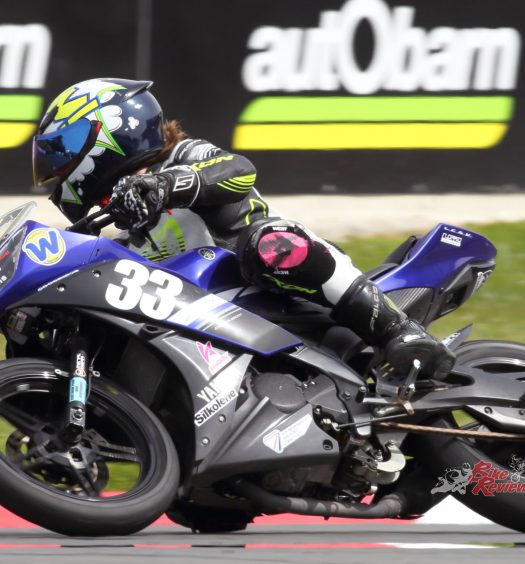1974 would see a historic shift from four-stroke to two-stroke domination in world level racing. The TZ350 became the ultimate privateer tool, and specials like this Maxton Dugdale TZ385 would achieve legend status. Photos: AC Archives & Chris de Vine
Fifty years ago this year, 1974, saw a momentous transition in 500GP racing, marking the last time a four-stroke – meaning MV Agusta, courtesy of the late Phil Read – would ever win a World Championship title, until the 2002 advent of MotoGP. The mighty TZ had arrived.
His erstwhile teammate Giacomo Agostini’s shock switch to Yamaha and the two-stroke camp for that season would only yield Ago the 350cc world crown to start with – but in 1975 it would be mission accomplished for him, and Yamaha, in the more prestigious larger-capacity class, too.
Read Alan’s full test of the Dugdale Maxton TZ385 here...
But 1974 also saw a landmark debut race victory for a Yamaha two-stroke in the Isle of Man Senior TT – then still a part of the 500cc Grand Prix race calendar – when Phil Carpenter on his oversize TZ351 won a rain-drenched race which had actually started in sunshine, but was then reduced to five laps with the onset of bad weather. The first eight places were all taken by cubed-up examples of the watercooled parallel-twin Yamaha TZ350 which had only gone on sale the year before, with the prototype RG500 XR15 square-four rotary-valve Suzukis of Paul Smart and Jack Findlay – the previous year’s race winner, when he became the first man to win the Senior TT on a two-stroke – no match in the slippery conditions for the smaller, lighter, less powerful but more manageable Yamahas.
But it wasn’t the first-ever 500GP victory for an upsized twin-cylinder 350 stroker, though. That honour had gone to Chas Mortimer when he won the season-ending 1972 Spanish GP run over the tight Montjuich Park circuit on his oversize air-cooled Yamaha TR3, and indeed just a month before Carpenter’s TT win German racer Edmund Czihak on a TZ351 had also won his home 500GP on the equally demanding/dangerous Nűrburgring Nordschleife circuit. But that was in a race with just seven starters and four finishers, all of them German, after everyone else had voted to boycott the wet race since the track hadn’t been lined with straw bales as usual, because of car races held the same day.
By contrast, that year’s Senior TT saw 72 starters, and in second place exactly 50 seconds behind the victorious Carpenter was a rather more authentic attempt at concocting a 500GP Yamaha twin than the nominally oversized TZ350s, many of which had obtained the necessary extra capacity simply by having their number plate backgrounds swapped from blue to yellow. That bike was the Maxton-framed Dugdale Yamaha TZ385 ridden by Charlie Williams to two second places in that year’s Isle of Man TT races – not only in the Senior, but also in the Formula 750 Classic, the main event of TT Week, behind Chas Mortimer on another Yamaha. Williams was one of Britain’s most versatile and successful racers of the era, an eight-time TT-winner on dealer-supported Yamahas in the 250/350cc classes, who between 1973 and 1978 also raced 1,000cc four-cylinder four-strokes for the factory Honda team in major Endurance events. Invariably partnered by Stan Woods on the fabulous RCB, in those six years Williams made his mark as a long-distance ace who invariably finished on the rostrum, winning the Spa 24 Hours and Montjuich 24 Hours, as well as other FIM Endurance Championship rounds at the Nűrburgring, Thruxton and Zandvoort.
But besides all this, Charlie Williams was also a short circuit star, holding lap records at almost every single UK circuit at one time or another in the 1970s after turning pro in 1973, though the closest he ever came to trying to make his mark in Grand Prix racing was on that unique TZ385 he raced for a single season in 1974 for his employers H. Dugdale Motors, one of Britain’s largest Yamaha dealers based in the Cheshire village of Alvanley, ten miles northeast of Chester. This was run by founder Hector Dugdale’s two sons, Hector Jnr. and his younger brother Alan, who was responsible for overseeing the firm’s successful and by no means inconsiderable racing activities, which proved a ready means of attracting customers to the firm’s showroom.
“When the first TZ350 Yamahas came into the country, it wasn’t long before eccentric crankpins were being fitted to them with two base gaskets to make them 351cc, and so eligible for the 500cc class, which meant the death of the Manx Norton and G50 singles,” recalls Charlie Williams, today a youthful-looking 73-year old who’s as fast as ever, judging by his defeat of John McGuinness, Troy Corser, Michael Dunlop and other younger contemporary stars in pouring rain at the 2016 Goodwood Revival, teaming with Mike Farrell to win the world’s most prestigious Historic road race. “That was the standard practice here in the UK, but in Holland there was a chap named Cees van Dongen, who was a very good engineer and quite a good rider on 125s and 50s – he won the 1969 Spanish 125 GP, and finished third in the World Championship that year. Cees came up with the idea of lengthening the stroke considerably on a TZ350 to make the capacity 385cc, while leaving the bore standard. This required combining a mish-mash of different parts from various Yamaha models, as well as quite a lot of machining – which is where Em Roberts, a good friend of ours, came in. He lived not far away in North Wales, and did a lot of machine work for Dugdale’s at that time.”
Emyr ‘Em’ Roberts is a skilled engineer who back then, in his spare time from working at a government research establishment just ten minutes away from Dugdale’s, machined up many components for the firm’s racebikes, as well as often building the engines that took Williams and his fellow team members Bernard Murray and Eddie Roberts (again, no relation) to victory in the Isle of Man. Em takes up the story. “Cees van Dongen was indeed the first one to make a proper 500 out of the TZ350 by lengthening the stroke, rather than do like everyone else and fit those sometimes phantom eccentric crankpins!” he says.
“We heard about this from friends in Holland, and then one morning Alan Dugdale who sponsored Charlie rang me to ask if I’d come over and see him soon as possible, as he had something there he wanted me to see which wouldn’t be there long. It turned out that Billy Guthrie, one of the Irish lads who Dugdale’s sponsored a bit, had gone over to Holland and bought the components to make a 385, and on his way back to Ireland had stopped off at Dugdale’s for a cup of tea. Alan kept him in the office while I had a look at what was in the boot of his car, and it was very obvious what Cees had done in combining the short-stroke TZ350 motor with its longer-stroke TR2 predecessor. We only had ten minutes, but that was long enough to work out what to do. So that same afternoon I sat down to draw everything up, and that little piece of industrial espionage produced two TT runner-up places the following June!”
To create what became known as the TZ385, even though its 64 x 59.6mm dimensions delivered a capacity of 384cc (versus the stock 347cc TZ350’s 64 x 54mm format), Roberts took a set of 1973 TZ350A crankcases and installed a crankshaft from the earlier air-cooled 350cc TR2, which when it debuted in 1969 measuring 61 x 59.6mm was the first Yamaha production racer to feature horizontally split crankcases. The TR2 crank was an all-round physically bigger component, and so all its dimensions had to be machined down to fit the more compact TZ crankcases. The longer stroke TR2 flywheels were narrowed and reduced in diameter, and a pair of 2.5mm-thick packing plates installed above and beneath the cylinders.
This meant machining grooves in them for O-rings top and bottom, and then a groove was also cut in the bottom of the crankcase to give extra clearance for the conrods, which thanks to the larger diameter 24mm TR2 big end – versus 22mm on the TZ – protruded beyond the flywheels. Those larger big ends meant using TR2 conrods, too, mounted with bigger-bore TZ350 pistons – although RD400 rods were later employed on TZs which, being 5mm longer, slowed down the piston speed and softened the power delivery a little.
Em Roberts’ handiwork performed well, producing 65bhp at 10,500rpm – 5bhp up on the TZ350 but with substantially more torque, although it vibrated noticeably more than the stock TZ350 because the balancing holes in the TR2 crankshaft were in the wrong place for the bigger, heavier pistons. Roberts had retained the stock early TZ cylinders with four transfer ports and a single exhaust, duly cleaned up to recover the port timing relative to the new position of the piston in the bore, as well as the original TZ350’s cylindrical-slide 34mm Mikuni VM34SC carbs bored out to 35mm (but not yet fitted with the later powerjets, though). The cylinder heads were unmodified TZ350, and the exhausts made by Andy Bacon at Abcon Exhausts to Roberts’ spec were essentially modified TZ350A type, with revised tapers and larger diameter tailpipes. The stock TZ350A six-speed transmission and primary drive were retained, but the dry clutch was fitted with an extra bronze plate and heavy-duty springs to cope with the increased torque. Surprisingly, there was no variable ignition advance built into the TZ350’s stock Hitachi TIA02-01 CDI used on the TZ385. Whatever advance that was set remained the same all through the rev range, though this could obviously be varied in advance depending on the track and weather conditions.
To house this meatier, more potent motor it made sense to wrap it in one of the 25 or so Maxton chrome-moly tubular steel twin-loop double cradle chassis created each year back then by today’s acclaimed suspension guru Ron Williams (once again, no relation!). Williams was later hired to design frames for bikes as diverse as the oval-piston Honda NR500, and the Rotary Norton that Steve Hislop took to victory in the Isle of Man Senior TT, and had begun his fledgling frame-building firm in 1971 in a shed beside his Manchester home, with Dugdale’s acting as sales agents for him. At a time when Japanese manufacturers had yet to learn the black art of frame design, the beautifully-made Maxton race chassis offered a substantial improvement in handling, especially over a bumpy public roads surface like the TT Course. That came thanks not only to the lighter yet stiffer Reynolds 531 tubing Ron used compared to the flimsier Japanese material, but also to having the engine positioned further forward relative to the axles in the Maxton frame’s much longer 57in/1450mm wheelbase compared to the Yamaha’s tiny 1330mm stance.
However, you might have the best frame in the world, but it can’t work without good suspension, which is why in 1972 Ron Williams had started to ‘tweak forks’, as he puts it. The Maxton-framed TZ385 thus also featured much improved suspension, with the Maxton-modified 34mm Yamaha YDS-7 telescopic fork set at a 27º rake, and a pair of Williams’ own Maxton shocks at the rear. 1974 would be the final year for such a design, though, with the victorious debut of the Maxton monoshock chassis in 1975, with Charlie Williams winning the Junior TT at over 104 mph on the single-shock Dugdale Maxton Yamaha TZ350’s debut. The slightly thirstier TZ385 had twin interconnecting fuel tanks, with the five-gallon main tank supplemented by a further gallon in the seat, which Hector Dugdale had brought back with him after visiting the USA for the Daytona 200. Six gallons would have been good enough for three laps in the TT, meaning just a single stop in the six-lap race, with the rear tank with a diaphragm connecting system emptying first, then the main tank.
After a satisfactory shakedown race on home ground just ten miles from Dugdale’s premises at the Oulton Park round of the 1974 Transatlantic Trophy on Easter Monday, April 14th, Charlie Williams gave the Maxton TZ385 its proper competition debut at the North West 200 one month later. There, he found himself up against his namesake John Williams – a close neighbour, good friend, but honestly no relation! – on a similar 385cc bike. “It was my first race in the NW200, and the conditions were atrocious,” recalls Charlie.
“John Williams was a great rider on long road circuits and wet tracks, and he had a hat-trick of wins that day, the first one ever at the North West. I finished second to him in the 500cc race on the TZ385, which was very satisfying – it showed the bike was quite competitive, although it did vibrate a fair bit because the balance factor presumably wasn’t quite right. But compared to the standard 350 it had much more torque, which we’d expected it would have, although top end speed was not a lot different. So of course what suited it were twistier sections with lower-gear corners where it would drive harder out of a second or third gear bend – and there are lots of those in the TT in places like Glen Helen, or the stretch from Ramsey to Guthrie’s.”
Indeed, the next race on the calendar was the TT, where after winning the 1971 250cc Manx Grand Prix at record speed on a borrowed Yamaha TD2B, Charlie had finished sixth in the Senior at his first TT in 1972 on an air-cooled Yamaha provided by Dugdale’s, whom he’d begun working for in 1969 as a mechanic after giving up his apprenticeship at Hawker Siddeley Aviation. In 1973 he’d scored his first TT victory in the 250cc Lightweight, the first man to average over 100mph in doing so, and had followed that up with victory in the same year’s 250cc Production TT. So for 1974 Dugdale’s furnished him with a full set of bikes, which included Maxton-framed TZ250 and TZ350 Yamahas on which he won the Lightweight TT for the second year running (but DNF’d in the Junior), as well as the TZ385 for the Senior and the Formula 750 Classic, on which he finished second in both races.
“Phil Carpenter beat me in the Senior in extremely wet conditions,” says Charlie. “The track got flooded when torrential rain arrived after three laps, and though I’d managed to set the fastest lap of the race [at just 101.93 mph] early on, I don’t think anybody told Phil it was raining, and he was just fantastic. So he beat me fair and square – that was a deserved win. Then in the Formula 750 my old adversary Chas Mortimer beat me on a 351cc Yamaha twin – again I got the fastest lap, but after a good battle he won by 8.6 seconds. Still, it was very satisfactory to get two second places on a brand new bike we’d built ourselves, and all credit to Em for his work in creating it. I won the 250 again that year, too, so I had a good TT all in all.”
However, not without some drama. “I’d broken my left scaphoid at Oulton Park on Easter Monday when I came off the TZ700 Yamaha in practice,” says Charlie ruefully. “It was quite unbeknownst to me when I did it, so I went out in the afternoon and won both the 250 and the 350 races with a broken scaphoid! But I was in absolute agony afterwards. I had it in plaster for 12 weeks, so I did all my North West 200 races and my ’74 TT with it in plaster, but that wasn’t a big problem – we lengthened the clutch arm down on the gearbox on each bike, so it made the lever lighter via greater purchase on it. Not a worry.”
Charlie’s TT success in winning the 250cc race and placing second in the 500 had earned him a handful of World Championship points, which in turn opened up the possibility of going GP racing on the Continent that summer with both bikes, at a time when entries were very hard to obtain, and as many as 60 riders would often attempt to qualify for the 36 grid places in the 250/350 classes. “Even after winning the 250cc TT in 1973 I got refused entries for Assen and Spa,” he recalls, “but for ‘74 they relented since I’d had such good results at the TT in both classes. So off we went to do my very first Grand Prix races outside the IoM. Having won the Spa 24-Hours the year before with John Williams on a Honda, I knew that circuit very well, so we planned a six-weekend campaign starting off with Assen, then down to Spa, up to Zandvoort for a non-title International, then from there to Anderstorp for the Swedish GP, over to Imatra for the Finnish, then dash across Scandinavia to get back to Brands Hatch for the Hutchinson 100. It was going to be a busy time!”
The campaign began promisingly at Assen, with 11th place for Williams in the 250cc race after a race-long battle with Mick Grant – whose right arm was ironically also in plaster! – ended with the Yorkshireman snaffling the last championship point on the line. But better was to come with the TZ385 in the 500cc Dutch TT, with a superb fifth place for Charlie to be first privateer home behind winner Giacomo Agostini and his Yamaha teammate Tepi Lansivuori, followed by the two MV Agustas of Phil Read and Gianfranco Bonera – but ahead of John Williams in tenth place on a similar bike. Revenge for the North West – and with a left wrist still (mostly) in plaster. “That was my first Grand Prix result, and it was extremely satisfying to be best of the rest behind the works bikes,” says Charlie. “So here I was thinking this Grand Prix job seems quite easy – now let’s go get some results down at Spa. Well, I had loads of trouble there – the clutch packed up in practice so I didn’t qualify on the 500, and I have no memory of the 250. Pride comes before a fall!”
After a good ride on the 250 to finish second to John Dodds in the Zandvoort International, bike problems unfortunately resurfaced in Anderstorp and Imatra, resulting in a total lack of results, and it wasn’t until he got back to Brands Hatch for the Hutchinson 100 at the end of that six-week period that Williams finished second behind Pat Mahoney in the Evening News Trophy 500cc race on the TZ385. He then had to hand all his bikes over to Dugdale’s up-and-coming riders Bernard Murray and Eddie Roberts to race in the Manx GP. Roberts won the 250 race, Murray the 350, and in the Senior 500 Eddie was five minutes in the lead on the TZ385 going over the Mountain on the last of the four laps, when the crankshaft failed. But, irony of ironies, the rider running five minutes behind Roberts who was thereby gifted victory in the race was none other than his Dugdale teammate Bernard Murray, riding a Maxton frame fitted with Charlie Williams’ spare TZ385 motor! So rather than being stamped as the eternal runner-up, the One Season Wonder finally won a race. Mission accomplished! “It was a bike that was built for a purpose, which it largely fulfilled,” says Em Roberts. “It only raced just the one year, and gave a good account of itself – with Charlie’s help, of course!”
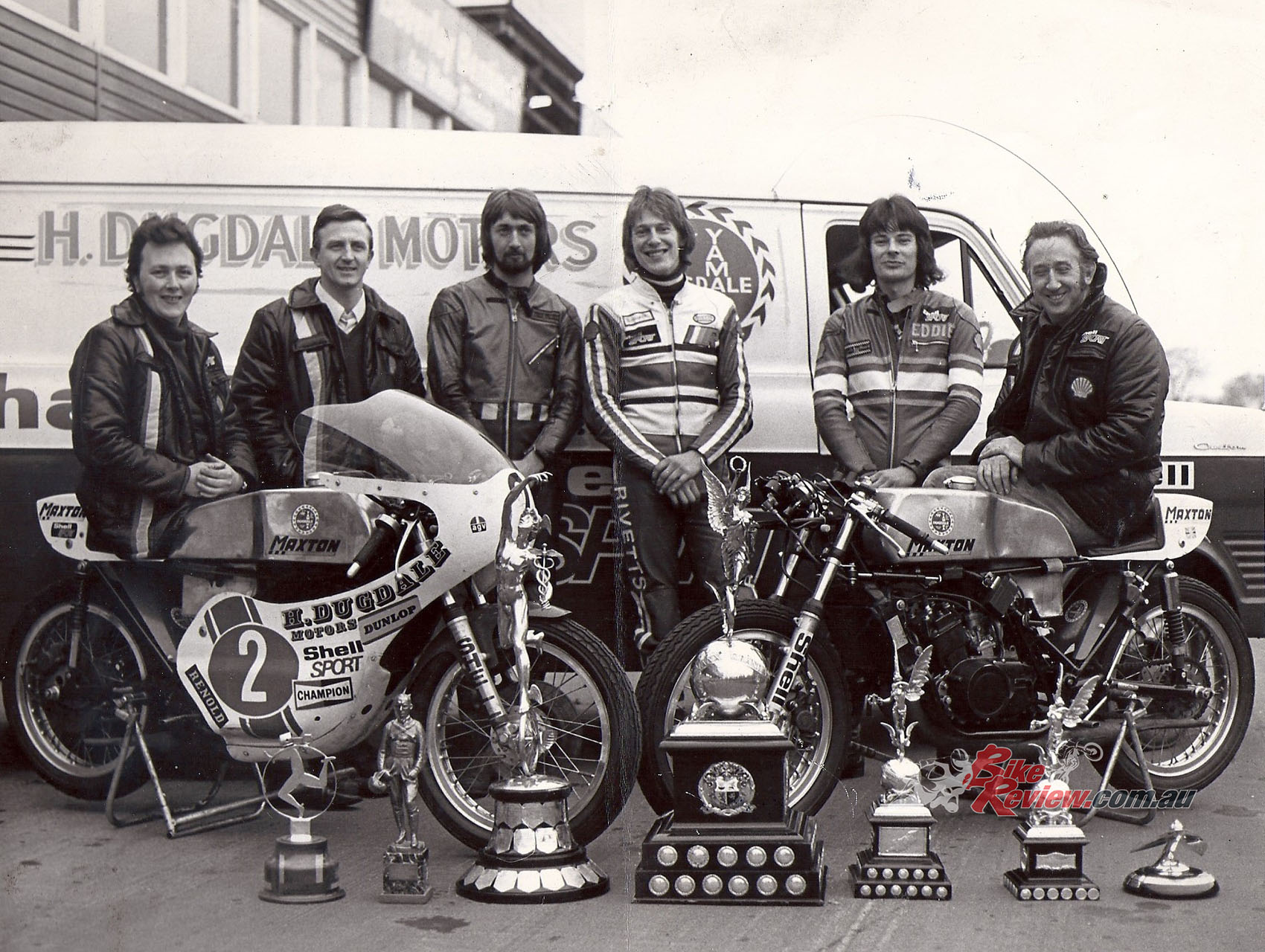
1974 H.Dugdale team at Oulton Park L-R Ron Wlliams, Alan Dugdale, Bernard Murray, Charlie Williams, Eddie Roberts + Hector Dugdale Jnr. sitting on TZ385.
the_ad_placement id=”main-990-banner-rotator”]
1974 Dugdale Maxton Yamaha TZ385 Specifications
Engine: Water-cooled, parallel-twin cylinder piston port two-stroke with 180º crank, 64 x 60.4mm bore x stroke, 389cc, 2 x 34mm non-powerjet cylindrical-slide Mikuni carburettors, Hitachi CDI ignition, six-speed close-ratio gearbox, dry multi-plate clutch with extra bronze plate and heavy-duty springs.
Chassis: Tubular steel frame, tubular steel swingarm, 34mm Yamaha YDS-7 forks, dual Maxton shocks, 27º rake, 1450mm wheelbase, single 260mm Yamaha fixed front rotor with two-piston Lockheed caliper, single 240mm Triumph Herald rear fixed rotor with two-piston Lockheed caliper, 1.85 x 18in front wheel with 90/90 – 18in Avon AM22 tyre, 2.15 x 18in rear wheel with 100/80 – 18in Avon AM22 tyre.
Performance: 119kg with oil and water, no fuel. 65bhp@11,500rpm, 145mph top speed (Isle of Man TT 1974). Owner: Charlie Williams, Cheshire, UK.


